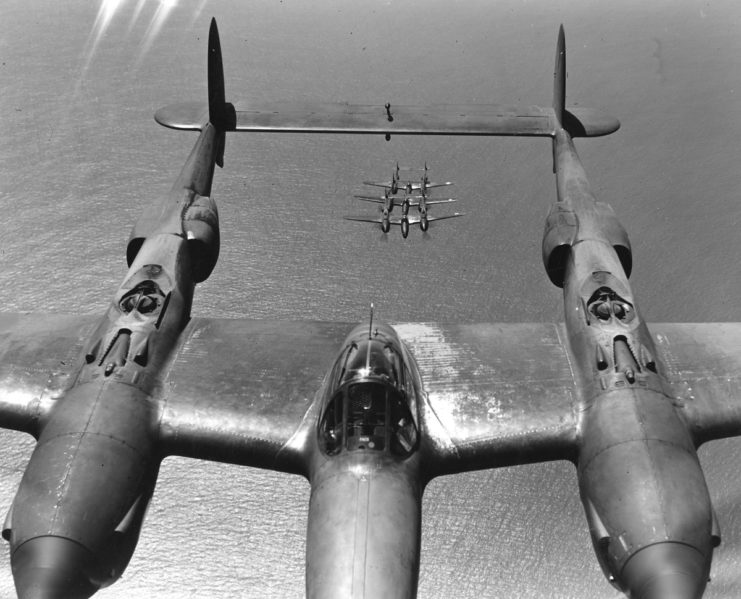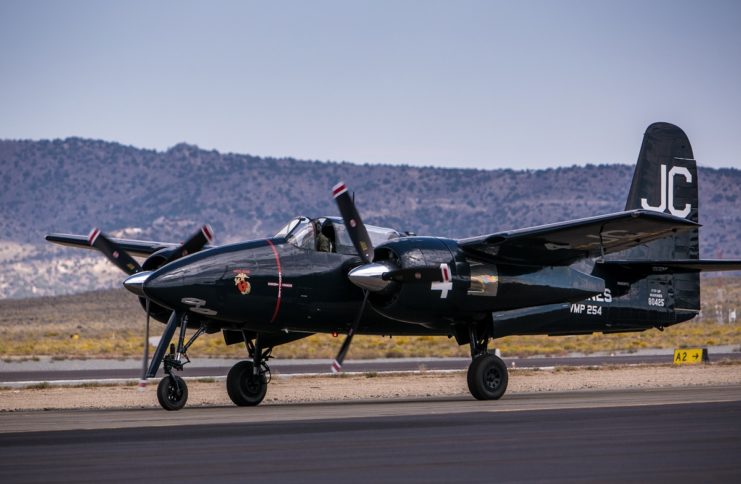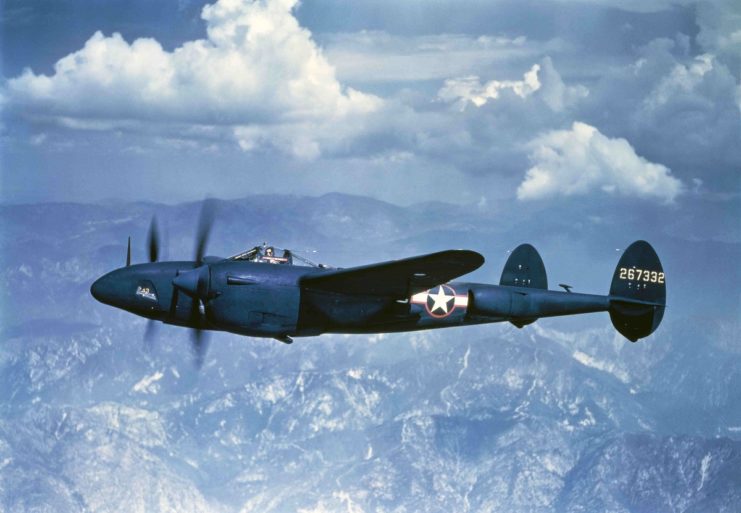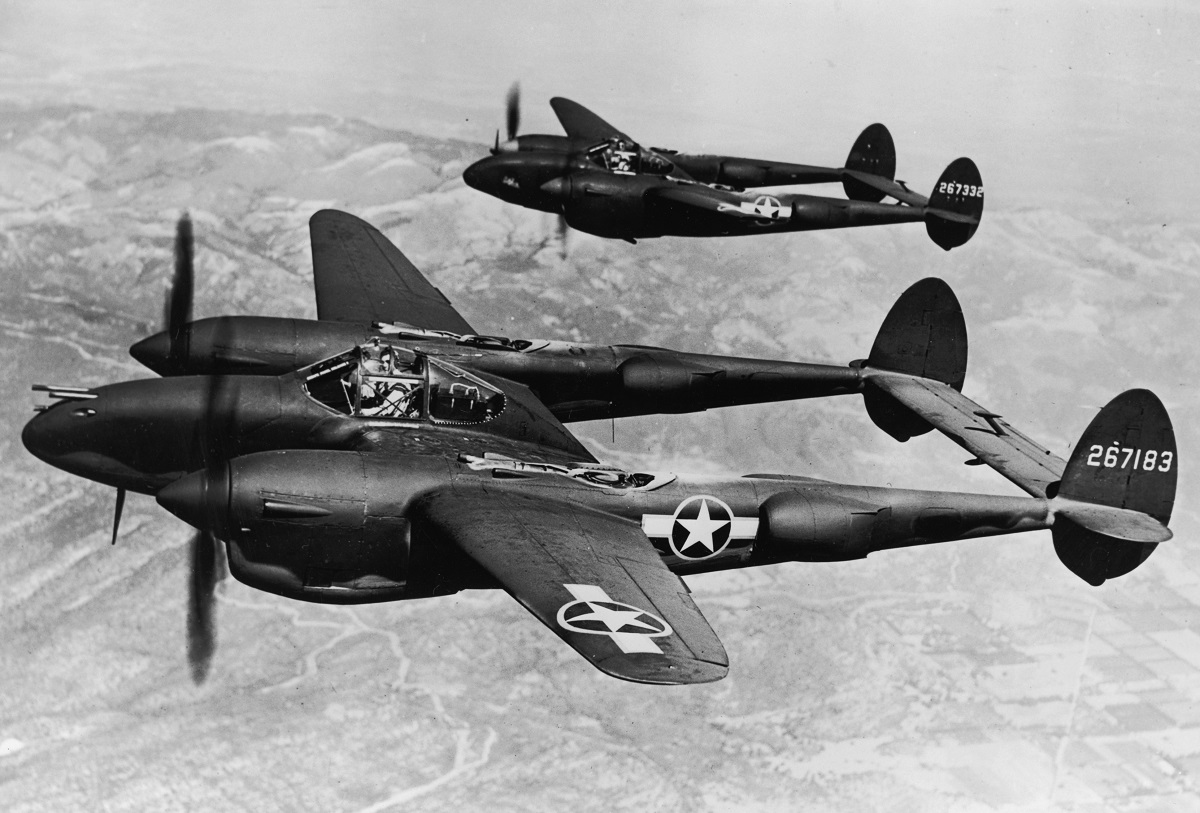During the war, if you needed a great fighter, fighter bomber, escort, reconnaissance aircraft, night fighter, and pathfinder, the P-38 Lightning was a go-to choice. It entered service just before Pearl Harbor, and continued in production until the end of the war; the only US aircraft to do so. A late 1930s design, the P-38 was one of the most capable aircraft on the planet upon its arrival and set the benchmark for fighter performance.
By 1945, the P-38 was still able to keep up with the latest and greatest propeller aircraft, despite being in production since the start of the war. Although it has never been forgotten, the sheer performance the P-38 brought to the table has perhaps been overshadowed by later aircraft like the P-51 Mustang.
In many ways, this high-speed, versatile twin-engine aircraft is comparable to the legendary British Mosquito.
The fastest fighter in the world

The idea for the P-38 was sparked in 1937 when the US Army Air Corps issued specification X-608, which listed the requirements for a new pursuit aircraft. High altitude performance was one of the main focuses of X-608. It also had to be able to reach 360 mph and climb to 20,000 feet in just six minutes. It was the most challenging Air Corps request ever released at that point in time. The aircraft had to use the Allison V-1710 V12 engine.
To reach such a high bar, Lockheed would have to think outside the box. Fortunately, one of the designers on the team was Clarence “Kelly” Johnson, the revered engineer who was the genius behind famous aircraft like the U-2 and SR-71.
Their submission certainly was an “out there” design, with the bulk of aircraft separated into three pods. Behind each of its two V12 engines was a tail. The “booms” contained the engines’ extensive turbosupercharger systems, radiator, and landing gear.
The pilot was located in the central gondola, which was home to the third landing gear wheel too. One of the many unique features of the P-38 was its tricycle landing gear, a rare sight on fighters at the time.
The aircraft had no guns in the wings, as was customary for US fighters, but were instead placed in a cluster on the front of the central pod. This gave the P-38 excellent accuracy up to almost 1,000 meters, as the bullets had no convergence point. Wing-mounted guns were set to cross over at a specific range, making hitting a target nearer or further than this point difficult. The P-38 was typically armed with four .50 caliber machine guns and one 20 mm cannon.
Lockheed constructed a prototype in the late 1930s that first flew in January 1939. Its extreme performance was immediately recognized. The following month the XP-38 made a cross-country flight over the US, where it reached a staggering 420 mph. In comparison, the Supermarine Spitfire was topping out at around 360 mph at this time.
Shortly after this, the aircraft was approved for production as the P-38. The British would later give it the name “Lightning.”
Operational success

When the first P-38s were delivered to squadrons, it was one of the fastest aircraft in the world. It had easily achieved the original requirements and then some, with a huge 1,150-mile range and a bomb load comparable to early B-17 Flying Fortresses. It was also able to reach 3,300 feet in just one minute. However the aircraft was full of new and complex technologies, like its flush-riveted butt-jointed aluminum skin panels and turbo supercharged engines, so production speed was slow to begin with.
Britain and France placed a combined order for 667 P-38s in 1940, but when France fell, Britain took in France’s order. The British weren’t too impressed with their versions of the aircraft, so most of the order was diverted to the USAAF.
A P-38 claimed America’s first victory over a German aircraft in 1942, against a Focke-Wulf Condor Fw-200 patrol bomber.
The P-38 performed best in the Pacific and was feared by the Japanese, who nicknamed it “two planes, one pilot.” It was more suited to the warmer Pacific, as its engine intakes over-cooled incoming air during European winters. The aircraft’s long-range made it particularly useful over the wide expanses of the Pacific.
This range was famously used in 1943 when US codebreakers learned about a Japanese flight that carried Japanese Admiral Isoroku Yamamoto, the architect of the Pearl Harbour attack. P-38s made a nearly 1,000 mile round trip over the Pacific, intercepting and killing Yamamoto. The moment was an enormous boost for US morale.
Over 10,000 P-38s were built over the entire duration of the US involvement in WWII, and the type flew more than 130,000 missions. It particularly excelled in aerial reconnaissance and was used extensively in this role, capturing 90 percent of all aerial film taken over Europe.
Issues

While the P-38 was a fantastic, versatile aircraft, it also suffered from a few inherent problems with the design. The most lethal of these was its infamous ability to become dangerously unstable at extremely high speeds and lock up the controls, in a situation known as high-speed compressibility. The P-38 was so fast that it was literally entering then-unknown territories of aerodynamic understanding.
At high speeds, like in a dive, the tail of the aircraft began violently shaking and the nose would lower, steepening its dive and increasing its speed. The controls would also become unresponsive. Lockheed engineers spent years attempting the solve the problem, which they eventually did.
Overall, the P-38 was a world-leading aircraft as soon as it entered service. Its size, speed, forgivingness, and payload meant it performed well in almost every role, and is a truly worthy rival to the Mosquito. It was largely outshone by the P-51, but the P-38’s twin-engine layout and other assets kept it relevant all the way until the war’s end.
